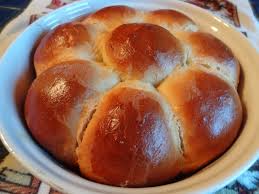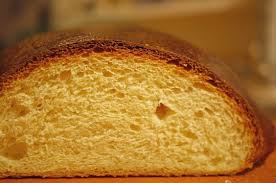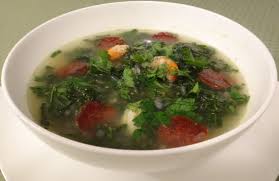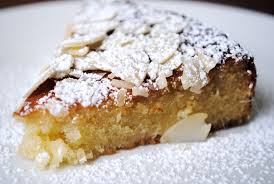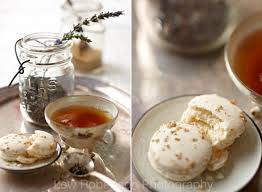
Since it was a Portuguese princess, Catherine of Braganza, who introduced tea to Britain, thereby founding the lovely English custom of Afternoon Tea, our Portuguese Tea honors the country of her birth. As you will recall, even before Catherine traveled to England to marry King Charles II, Portuguese missionaries and traders sailed to Asia and brought tea leaves back to Europe. As you review our menu, you will notice that the Portuguese word for tea, cha, is also the word for tea in the Chinese and Japanese languages. It is with gratitude to these adventurous mariners that we offer our Portuguese Afternoon Tea.
You can simplify the preparation for this menu by ordering several of the items on line or buying them at an imported food shop or Portuguese deli. The Portuguese teas, cheese, honey, linguica, sardines in hot sauce, sugar coated almonds, and of course Port, are all available for purchase. You can make the Caldo Verde soup the day before and reheat it. The Spanish Almond Cake can be baked in the morning. This will give you time to make the Egg Yolk tarts and Malasadas just before the tea party, as they are delicious served while they are still warm.
You can simplify the preparation for this menu by ordering several of the items on line or buying them at an imported food shop or Portuguese deli. The Portuguese teas, cheese, honey, linguica, sardines in hot sauce, sugar coated almonds, and of course Port, are all available for purchase. You can make the Caldo Verde soup the day before and reheat it. The Spanish Almond Cake can be baked in the morning. This will give you time to make the Egg Yolk tarts and Malasadas just before the tea party, as they are delicious served while they are still warm.
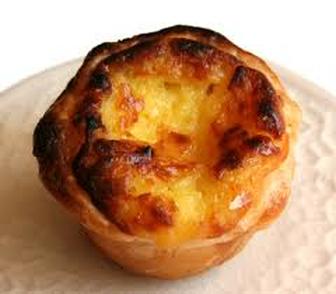
Portuguese Tea: The Asian and Pacific Connection
As we know from our history classes, Portugal and Spain were two of the wealthiest European countries in the 1500s and led the way in exploration, trade and colonization in the “New World.” In 1513, the Spanish explorer, Vasco Nunez de Balboa, was the first European to view the Pacific Ocean. Even earlier, in 1510, the Portuguese established a colony in Goa in India, and in 1557, Macao, (now returned to China,) became a well-established Portuguese settlement. Portuguese traders arrived in Japan in 1543 and were the first Europeans to be seen by the Japanese. In the 1800s, large numbers of Portuguese laborers immigrated to Hawaii from Madeira and the Azores to work in the sugar cane fields. Between 1878 and 1887, 17,500 Portuguese arrived in Hawaii, and people of Portuguese ancestry now comprise 4% of the population of Hawaii.
The Portuguese left a legacy of good food in every country they visited. The delicious Portuguese egg yolk tarts featured in our Portuguese Afternoon Tea, are still a popular treat in Macau and on Chinese Dim Sum carts. In Hawaii, Portuguese sweet bread is now so ubiquitous that it is referred to as Hawaiian sweet bread, and the Portuguese doughnuts, malasadas, are sold at food trucks, bakeries, school fundraisers and church suppers all over Hawaii.
Japanese food was also forever changed by their interactions with Portuguese culture. The Portuguese introduced bread to Japan, and now pan is the Japanese word for bread. Another Japanese word, kasutera, refers to Portuguese sponge cake, now especially popular in Nagasaki. And, to the surprise of many, tempura, the tasty batter fried Japanese vegetables, are in fact Portuguese in origin.
Goa, in India, formerly a Portuguese settlement, is now famous for the spicy curry dish, vindaloo, derived from the Portuguese vinha d’alous, pork marinated in vinegar and garlic. Vinha d’alous also remains a favorite in Hawaii, where it is readily available in diners served for breakfast with eggs and is a featured item on the Christmas and Thanksgiving menus of Hawaiians of Portuguese ancestry.
As we know from our history classes, Portugal and Spain were two of the wealthiest European countries in the 1500s and led the way in exploration, trade and colonization in the “New World.” In 1513, the Spanish explorer, Vasco Nunez de Balboa, was the first European to view the Pacific Ocean. Even earlier, in 1510, the Portuguese established a colony in Goa in India, and in 1557, Macao, (now returned to China,) became a well-established Portuguese settlement. Portuguese traders arrived in Japan in 1543 and were the first Europeans to be seen by the Japanese. In the 1800s, large numbers of Portuguese laborers immigrated to Hawaii from Madeira and the Azores to work in the sugar cane fields. Between 1878 and 1887, 17,500 Portuguese arrived in Hawaii, and people of Portuguese ancestry now comprise 4% of the population of Hawaii.
The Portuguese left a legacy of good food in every country they visited. The delicious Portuguese egg yolk tarts featured in our Portuguese Afternoon Tea, are still a popular treat in Macau and on Chinese Dim Sum carts. In Hawaii, Portuguese sweet bread is now so ubiquitous that it is referred to as Hawaiian sweet bread, and the Portuguese doughnuts, malasadas, are sold at food trucks, bakeries, school fundraisers and church suppers all over Hawaii.
Japanese food was also forever changed by their interactions with Portuguese culture. The Portuguese introduced bread to Japan, and now pan is the Japanese word for bread. Another Japanese word, kasutera, refers to Portuguese sponge cake, now especially popular in Nagasaki. And, to the surprise of many, tempura, the tasty batter fried Japanese vegetables, are in fact Portuguese in origin.
Goa, in India, formerly a Portuguese settlement, is now famous for the spicy curry dish, vindaloo, derived from the Portuguese vinha d’alous, pork marinated in vinegar and garlic. Vinha d’alous also remains a favorite in Hawaii, where it is readily available in diners served for breakfast with eggs and is a featured item on the Christmas and Thanksgiving menus of Hawaiians of Portuguese ancestry.
Two Haiku
|
In the candle glow
Two young nuns at Fatima Chant the rosary |
In the great Spanish
Cathedral, the bride’s mother Waits in her red gown. |
Menu
Beverages:
Cha de Limao (Portuguese Lemon Tisane)
Espresso
Port
Savories:
Assorted Canapés on Wheat Crackers: Sardines in Hot Sauce, Slices of Linguica
Portuguese Cheese with Honey and Portuguese Sweet Bread (Sao Jorge with Mel Puro de Portugal)
Mini Cups of Caldo Verde, (Portuguese Potato and Kale Soup)
Sweets:
Portuguese Egg Yolk Cream Tarts (Pastel de Nata)
Mini Malasadas (Portuguese Doughnuts)
Sugar Coated Almonds (Almendoas de Pascoa)
Spanish Almond Cake (Pastel de Almendras)*
Beverages:
Cha de Limao (Portuguese Lemon Tisane)
Espresso
Port
Savories:
Assorted Canapés on Wheat Crackers: Sardines in Hot Sauce, Slices of Linguica
Portuguese Cheese with Honey and Portuguese Sweet Bread (Sao Jorge with Mel Puro de Portugal)
Mini Cups of Caldo Verde, (Portuguese Potato and Kale Soup)
Sweets:
Portuguese Egg Yolk Cream Tarts (Pastel de Nata)
Mini Malasadas (Portuguese Doughnuts)
Sugar Coated Almonds (Almendoas de Pascoa)
Spanish Almond Cake (Pastel de Almendras)*
*The Spanish and the Portuguese may have been arch rivals for centuries, but they are also next door neighbors, and this divine cake is too good to leave out of our menu just because it is Spanish rather than Portuguese.
|
Recipes Included:
Cha de Limao (Portuguese Lemon Tisane) This caffeine-free tisane is wildly popular in Portugal as a digestive elixir and a bedtime beverage guaranteed to induce peaceful sleep. It is also a charming hot teatime drink. Portuguese Sweet Bread Portuguese Sweet Bread is an airy, white yeast bread, rich with butter, eggs and a little sugar. It is not as sweet as its name suggests, and it is good with everything. Leftovers will make perfect toast for breakfast the next day and sandwiches for tomorrow’s lunch. This classic Portuguese bread is also known as Hawaiian Sweet Bread. To find out why, read our sidebar below entitled “Portuguese Tea: The Asian and Pacific Connection.” Both the Portuguese and the Hawaiian versions of this beautiful bread are readily available in grocery stores, but you can bake your own using this easy recipe from King Arthur Flour. Not all of the recipes we researched call for lemon peel and vanilla, and if you prefer to be a purist, you can delete these additions, but we think they add a little extra charm to an already charming bread. Portuguese Potato and Kale Soup (Caldo Verde) Caldo Verde, or green soup, is the national lunch of Portugal. Usually served with bread and often also with cheese, this healthy one-dish meal can be found in every restaurant in Portugal. Spicy sausage such as chourico or linguica is often added to the soup, although you can make Caldo Verde as a vegetarian dish if you wish. For our Portuguese Afternoon Tea, serve this lovely soup in small cups with Portuguese Sweet Bread and the savory canapés listed on our menu. Portuguese Egg Yolk Cream Tarts (Pastel de Nata) Portuguese Egg Yolk Cream Tarts are as popular all over the country as Green Soup. Portugal is full of bakeries that create these delectable little pastries, which are best eaten while they are still warm. You can make them yourself, turning your tea party into a Portuguese festival never to be forgotten. This easy and reliable recipe from Anita Borghese’s Just Desserts will produce ten scrumptious little tarts, more than enough for you and your friends to enjoy. Malasadas (Portuguese Doughnuts) Malasadas were originally made by Portuguese cooks with leftover Sweet Bread Dough, thus the name, which translates as “badly cooked,” referring to the fact that malasadas started out as a kind of afterthought, like the cinnamon pinwheels some of our grandmothers used to make with leftover pie dough. Today, malasadas are the best doughnuts imaginable, but they are infinitely better when they are eaten while still warm. For your Portuguese Afternoon Tea, the malasadas will be the last item you will prepare. Don’t worry if you are still frying them when the guests arrive, as they will appreciate the rare opportunity to devour just-fried and still warm malasadas. These treats are made with yeast dough without holes in the middle. They are as popular in Hawaii as they are in Portugal, and we encourage you to add them to our Hawaiian Afternoon Tea Menu, when you are ready to host a Hawaiian Tea. As a nod to the popularity of malasadas in Hawaii, we offer this recipe from Leonard’s Bakery in Honolulu. These “best ever” malasadas are also served from bright red and white striped Leonard’s Malasada Trucks where there is always a line of patient Hawaiians waiting for their doughnuts which are made in the truck only after they have been ordered. Spanish Almond Cake (Pastel de Almendras) This elegant pound cake filled with ground toasted almonds is very popular in Spain, Portugal’s now friendly next-door neighbor. This cake needs no icing or decoration, as it has a delicate dignity all its own. Serve it on a cake pedestal sprinkled all over with powdered sugar. It is best the day it is baked, but it is also wonderful for breakfast the next morning. |


